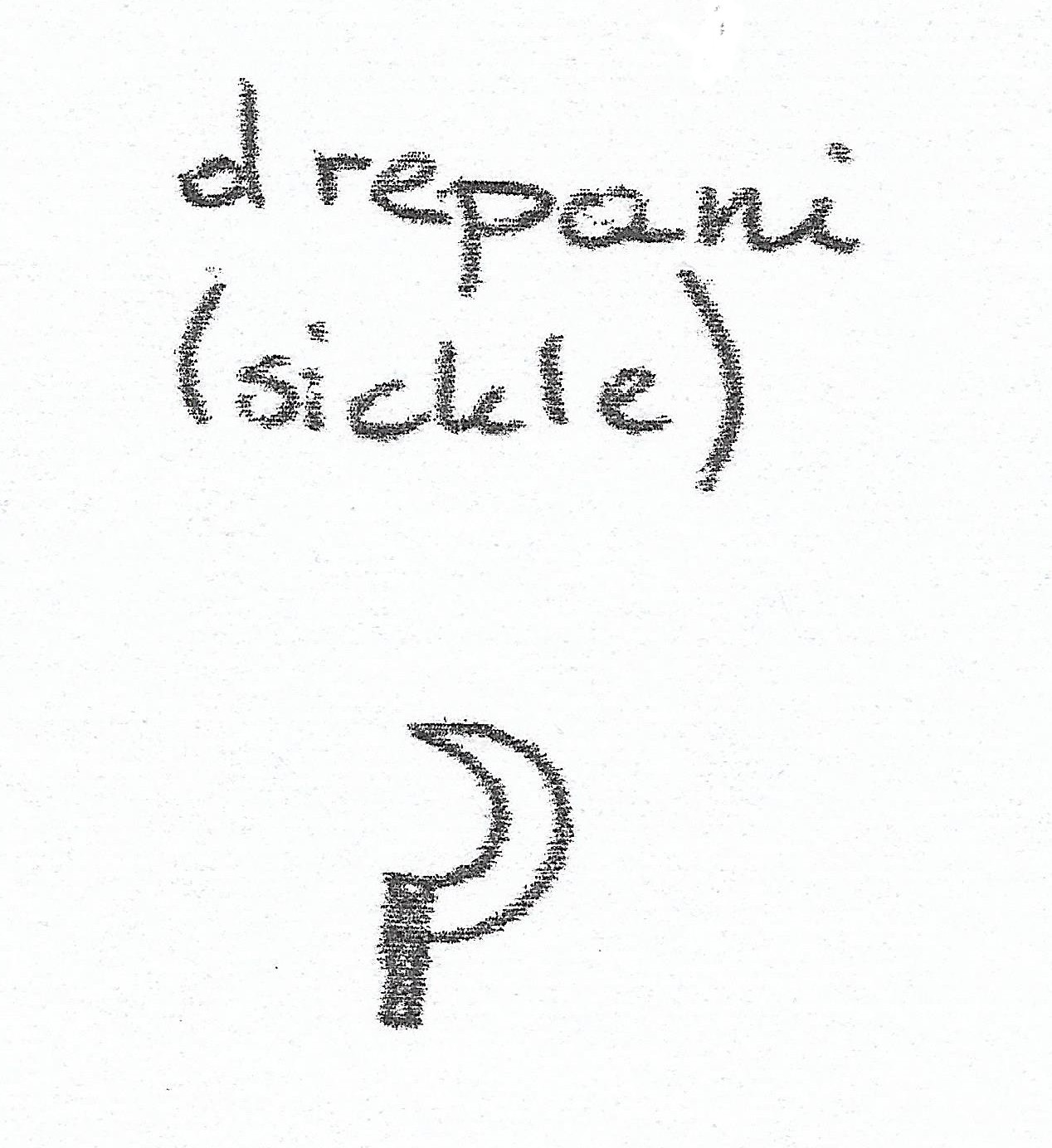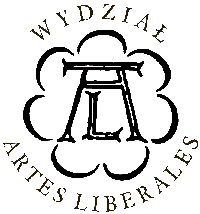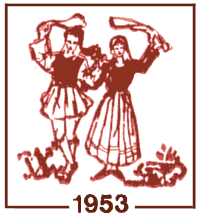| Testimony of: | sickle |
| Source | Καρακάσης 1962, 339 (in: EEH, sv. δρεπάνι, p. 154) |
| Original text | Ο χορός του Μαχαιριού ωνομάζετο παλαιότερον και χορός του Δρεπανιού, οπότε ο χορευτής αντί μαχαιριού εκράτει δρεπάνι. Περί του χορού τούτου ο Θεόδουλος Γ. Κούρτουλος ή Σαουλίν εκ Ριζοκαρπάσου, ετών 73, επαγγελματίας βιολάρης, παρέσχε τας εξής πληροφορίας: "Τον χορόν αυτόν εχόρευεν όμιλος από 6-8 άτομα τα οποία εθέριζαν όλα μαζί τα χωράφια του καθενός. Κατά το θερισμό άφηναν ένα μέρος του χωραφιού αθέριστο για το τέλος όπου οι θερισταί αρχίζοντας τον χορό το θέριζαν κινώντας το δρεπάνι με τον ρυθμό του τραγουδιού χορεύοντας και τραγουδώντας. Ούτω εξεδήλωναν την χαράν τους διότι ετελείωσαν καλώς την εργασίαν τους (το θέρισμα). |
| English translation | The dance of the Knife, as it used to be known in the past, and the Sickle dance, where the dancer holds a sickle instead of a knife. The following information was given about this dance by Theodoulos G. Kourtoulos or Saoulin from Rizokarpasos, aged 73, professional fiddler: “This dance is danced by a group of 6-8 people who used to reap each other’s fields together. During the harvest they would leave a part of the field unreaped, saving it for the end, and the harvesters, starting to dance, were reaping it, moving the sickle in the rhythm of the song, dancing and singing. Thus they were showing their joy from fulfilling their work (the harvest) well. |
| Time/occasion of occurence | harvest |
| Region of occurence | Cyprus - Show on map |
| Function | confirming manliness/dexterity, |
| Dance name | Drepanin |
| Symbol in Kinetography score |
|


